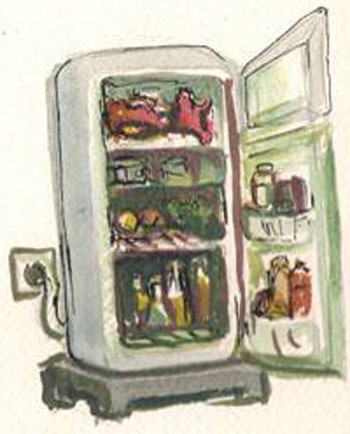10.2.4 The use of low temperature
Unlike high temperature, cold is not an effective means of destroying pathogenic bacteria, viruses and toxins in foods, but it can retard their multiplication and metabolic activities.
No food or food product is rendered free from microorganisms by low temperature (by freezing or refrigeration). This explains the generally accepted danger of refreezing any kind of thawed foods. Certain parasites, such as Taenia cysts in beef and all stages of Trichinella spiralis, can be completely destroyed by storage of infected food at -18ºC for periods of 20 to 30 days, depending upon the rate of cold penetration. The most important prerequisite for successful preservation by cold is that the food must be clean to start with.
Chilling
Chilling involves reducing food temperatures, but only to approximately -1ºC. Refrigerators for cold storage/chilling are normally used at 0ºC to +8ºC for preservation of a wide variety of food products (see Figure 10.3).

Freezing
Freezing of food, when carried out properly, is one of the best methods of preserving foodstuffs in as nearly natural a state as possible. Freezing preserves the storage life of foods by slowing down enzyme reactions and the growth of microorganisms. A low storage temperature of at least -12°C is important if prolonged storage life is desired without losing flavour. Needless to say, freezing foods to preserve them is only possible with a freezer and reliable power supply.
Vegetables with a high moisture content do not freeze well because cellulose (in plant cell walls) tends to be broken down by enzymes regardless of the rate of freezing, making the vegetables soft. Therefore, for such food items, blanching to destroy enzyme activity is required prior to freezing.
10.2.3 The use of high temperature
